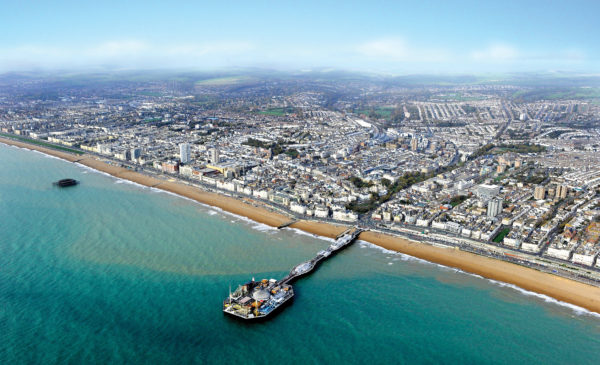In light of #MindfulMarch, Martha Salter discusses how the pandemic has seen an increase in small businesses, the steady rise of slow fashion and how to recognise if companies actually have their sights set on improving their environmental impact within the fashion industry.
If you are anything like me, you may have noticed the increase of sustainable fashion brands being advertised in the media and especially, social media. Instagram’s algorithm seems to have singled me out and started targeting adverts for ethically and sustainably sourced clothing brands, such as TWOTHIRDS and WAWWA, but I am not complaining.
During the pandemic, a multitude of individuals have branched out and set up online platforms to market their creative endeavours, but it is wise to be aware that shopping small and locally is not always sustainable or at the hands of ethical sourcing.
The sustainability of buying handmade earrings from a small Etsy shop is not to be confused with the sustainability of shopping at, for example, Urban Outfitters. The jewellery and clothing must be sourced ethically from sustainable materials or customers are still contributing to unsustainable fashion, but on a smaller scale. Although, this is arguably much better, as slowing mass fast fashion organisations down is paramount in attaining sustainability and working towards positively impacting the bigger problems, such as climate change. Shopping small, locally and supporting independent, ethical, sustainable brands is a step in the right direction.
Embed from Getty ImagesMany major brands are switching up the way they promote their products and taking a noticeably more sustainable approach to fashion. This includes, Gucci, with their Equilibrium commitment and H&M, with their aim to make all their clothes from recycled or other sustainably sourced materials by 2030. However, although companies believe that their aims will improve the sustainability of their products, the amount of waste produced by mass organisations and the life span of clothing is an extremely important factor when it comes to having an impact on the environment. I.e., clothing being made from sustainable materials does not necessarily imply that they will be of long-lasting quality. The life span of products is extremely important and often a major contributor to the price of certain clothing or jewellery. Quality denotes life span which goes hand in hand with sustainability and how much waste a company produces.
Environmental consciousness and the good will of consumers is often taken advantage of by organisations through greenwashing. This is when organisations utilise PR tactics to mislead consumers by portraying their products as environmentally beneficial and in a positive ethical light when they are, in fact, detrimentally impacting the environment. H&M aim to make their sustainable clothing affordable, and some items can already be seen to be made from 100% organic cotton, but does this tackle the issue? Organic materials are those that have been grown without the use of chemical fertilisers or pesticides, which is positive, but the production of clothes must be sustainable at every step of the supply chain to make a difference. Furthermore, as aforementioned, ensuring that their clothes are affordable will likely have an impact on the quality, and further contribute to the inevitability of clothes waste.
One solution for waste prevention is recommerce. Depop accounts and the number of individuals deciding to sell their clothes via the platform have gone through the roof in recent months. It is sometimes hard to look past the extortionate price tag that sellers have attached to a pair of vintage corduroy trousers they found at a charity shop, but such platforms are ultimately a source for good. Upcycling and recommerce through the action of buying and selling previously owned items is a major player in the prevention of waste within the fashion industry. They are demonstrative of a circular approach to slowing down fast fashion and integrating the concept of recycling into how individuals decide to purchase products.
Transparency is extremely important when it comes to shopping sustainably. Who was the product made by? Where was it made? What was used to make it? In an interview with Forbes, Anna Gedda, head of sustainability at H&M Group said, “customers are empowered to make informed decisions, ensuring that everything they buy is designed, manufactured and handled with responsibility for people and the environment”, which aligns with the concept of transparency. If more organisations were overt about their production process, consumers would be able to make more informed decisions regarding where they purchase their clothes and why.
“With people all over the world demanding social, environmental and economic change, it is clear that companies in the fashion industry have to reassess their priorities and adapt to the new reality.”
Birger for Forbes.com
Researching the commitments and ideologies of an organisation before buying their products is one way of making sure that you are not buying into or supporting unsustainable fashion. Supporting small businesses and trying not to buy impulsively is also a major component in escaping the clutches of fast fashion. Simply taking a moment to consider whether you genuinely need the thing that has caught your eye. And finally, being wary of advertisements and remembering that they have been purposefully made to target your interests and influence you to part with your money.








